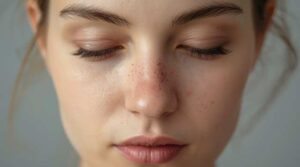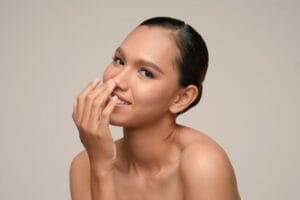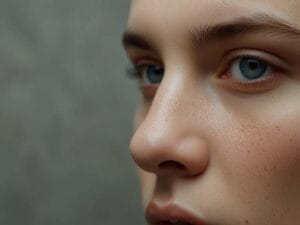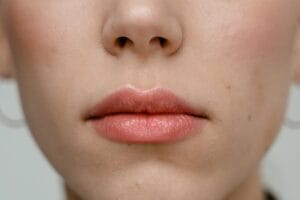Swelling and Bruising After Rhinoplasty: What to Expect During Recovery
You’ve just had rhinoplasty surgery, and now you’re staring in the mirror at a face that looks nothing like what you expected. The swelling and bruising after rhinoplasty can be pretty shocking—even when your surgeon warned you it was coming. Here’s what you need to know about this completely normal part of the healing process, plus some practical tips that might help things settle down a bit faster.
What is swelling and bruising after rhinoplasty? Swelling and bruising after rhinoplasty are normal side effects that occur when blood vessels and tissues are disrupted during nose surgery. Swelling typically peaks within 48-72 hours post-surgery and gradually decreases over weeks to months. Bruising usually appears within the first 24 hours, spreads around the eyes and cheeks, and typically resolves within 10-14 days. Most visible swelling subsides within 2-3 weeks, though subtle swelling can persist for up to a year as the nose continues to refine its final shape.
Why Swelling and Bruising Happen After Rhinoplasty
Let’s start with the basics. When your surgeon works on your nose during rhinoplasty, they’re essentially reorganizing bone, cartilage, and soft tissue. That process—no matter how skilled the surgeon—creates trauma. Your body responds to that trauma the same way it responds to any injury: with inflammation.
Think about what happens when you stub your toe really hard. It swells up, right? Same principle here, just in a more visible and sensitive location. The swelling after rhinoplasty happens because your body sends extra fluid to the surgical site to help with healing. Meanwhile, the bruising occurs when small blood vessels get disrupted during the procedure. Blood leaks into the surrounding tissues, and that’s what creates those purple, blue, and yellow marks you’re seeing.
Here’s something many patients find surprising: the amount of swelling and bruising you experience doesn’t necessarily correlate with how extensive your surgery was. Some people who have relatively minor adjustments end up with more visible bruising than others who had more significant work done. It depends on factors like your skin thickness, how easily you bruise normally, your age, and even your genetics.
Swelling and Bruising After Rhinoplasty: The Science Behind Post-Surgical Swelling
Your body’s inflammatory response is actually a good thing—it’s your immune system doing its job. Inflammation is a crucial part of wound healing. The increased blood flow brings nutrients and immune cells to the area, which helps repair damaged tissue. The problem is, this process can make you look pretty rough for a while.
During rhinoplasty, your surgeon needs to separate the skin from the underlying structures, reshape bone and cartilage, and then put everything back together. All of that manipulation causes fluid to accumulate in the spaces between tissues. That fluid—called edema—is what creates the puffy, swollen appearance. It’s particularly noticeable in areas with loose skin, like around your eyes and the tip of your nose.
The Typical Timeline: When Swelling and Bruising Peak
Most people want to know one thing: when will this get better? The answer isn’t exactly straightforward, but there are some general patterns you can expect.
Days 1-3: The Peak Period
This is when things look their worst. Swelling and bruising after rhinoplasty typically reach their peak around 48 to 72 hours after surgery. During this time, you might notice:
- Significant swelling around your nose, eyes, and cheeks
- Bruising that spreads downward due to gravity (it can travel down your face and even into your neck)
- A feeling of tightness or pressure in your face
- Difficulty seeing clearly if your eyes are swollen shut
This is completely normal. Your body is in full healing mode, and the inflammation is at its maximum. The good news? It can only get better from here.
Days 4-7: The Turning Point
Around day four or five, you’ll usually start seeing some improvement. The bruising begins to change color—shifting from deep purple and blue to green, then yellow. This color change happens as your body breaks down and reabsorbs the blood that leaked into your tissues. The swelling starts to decrease, though you might notice it fluctuates throughout the day (often worse in the morning, better by evening).
By the end of the first week, most of the dramatic bruising has faded significantly. The swelling is still there, but it’s less pronounced. You might even feel comfortable going out in public with some strategic makeup or sunglasses.
Weeks 2-4: Visible Improvement
During this period, the majority of visible bruising should be gone. Any remaining discoloration is usually faint and easily covered. The swelling continues to decrease, though it’s still noticeable to you (and probably not to others). Your nose might look a bit wider or larger than you expected—this is normal residual swelling, not your final result.
Many patients get concerned during this phase because their nose doesn’t look like what they envisioned. But here’s the thing: you’re still only seeing about 60-70% of your final result. The remaining swelling is subtle but significant, and it takes time to resolve.
Swelling and Bruising After Rhinoplasty: Months 2-6: The Refinement Phase
This is when the subtle changes really start happening. Month by month, the remaining swelling gradually subsides. Your nose becomes more defined, the tip becomes more refined, and you start seeing the shape your surgeon created. Most of the major swelling is gone by month three, but subtle changes continue through month six and beyond.
Swelling and Bruising After Rhinoplasty: 6-12 Months: Final Results
It can take up to a full year—sometimes even longer—for all the swelling to completely resolve. The last areas to settle are usually the tip of the nose and the area around the nostrils. This is because these areas have thicker skin and more complex anatomy, so they hold onto fluid longer.
By the one-year mark, you should be seeing your final result. The swelling and bruising after rhinoplasty are long gone, and your nose has settled into its new shape. That said, some patients notice very subtle changes even beyond the one-year point, particularly if they had thick skin or more extensive work done.
Swelling and Bruising After Rhinoplasty: Factors That Affect Your Swelling and Bruising
Not everyone experiences swelling and bruising after rhinoplasty the same way. Several factors influence how much you’ll see and how long it lasts.
Your Individual Characteristics
Your skin type plays a big role. People with thin skin tend to show bruising more dramatically, but the bruising also fades faster. Those with thick skin might have less visible bruising initially, but they often experience more prolonged swelling. Age matters too—younger patients typically heal faster, while older patients might see bruising and swelling persist a bit longer.
If you’re someone who bruises easily in general (maybe you’ve noticed this when you bump into things), you’ll probably see more bruising after your rhinoplasty. This isn’t a problem—it’s just how your body responds. On the flip side, if you rarely bruise, you might be pleasantly surprised by how minimal your bruising is.
Swelling and Bruising After Rhinoplasty: Surgical Technique
The approach your surgeon uses can influence swelling and bruising. Open rhinoplasty—where the surgeon makes an incision across the columella (the strip of skin between your nostrils)—typically causes more initial swelling and bruising than closed rhinoplasty. However, open rhinoplasty gives the surgeon better visibility and access, which can be important for more complex cases.
Revision rhinoplasty (having a second or third nose surgery) often results in more swelling and bruising than primary rhinoplasty. This is because the tissues have been operated on before, so they’re more sensitive and reactive.
Extent of the Procedure
If your surgeon had to break your nasal bones (osteotomy), you’ll likely see more bruising around your eyes. This is because the bones are connected to the tissues around your eyes, so trauma to the bones affects those areas too. Procedures that involve significant tip work or cartilage grafting might cause more prolonged swelling in those specific areas.
How to Minimize Swelling and Bruising After Rhinoplasty
While you can’t completely avoid swelling and bruising after rhinoplasty, there are definitely things you can do to help minimize it and speed up the healing process.
Follow Your Surgeon’s Instructions
This might seem obvious, but it’s worth emphasizing. Your surgeon knows your specific case and what you need. Their post-operative instructions aren’t suggestions—they’re based on years of experience and what works best for healing. Common instructions include:
- Keeping your head elevated (even when sleeping) for the first week or two
- Applying cold compresses to reduce swelling
- Avoiding strenuous activity that could increase blood pressure
- Taking prescribed medications as directed
- Not blowing your nose for a specified period
Deviating from these instructions can prolong your recovery and potentially affect your results. It’s not worth the risk.
Cold Compresses: Your Best Friend
Cold compresses are one of the most effective ways to reduce swelling and bruising after rhinoplasty. The cold constricts blood vessels, which reduces both bleeding and fluid accumulation. Most surgeons recommend applying cold compresses for 15-20 minutes at a time, several times a day, during the first 48-72 hours.
Important note: don’t apply ice directly to your skin, and don’t put pressure on your nose. Use a soft cloth or gel pack, and apply it gently to your cheeks and around your eyes (not directly on your nose). Some people find that frozen peas work well because they conform to the shape of your face.
Swelling and Bruising After Rhinoplasty: Elevation is Everything
Keeping your head elevated helps reduce swelling by allowing gravity to work in your favor. Fluid drains away from your face instead of pooling there. During the first week, you should sleep propped up with several pillows—aim for a 45-degree angle if possible. Some patients find it helpful to sleep in a recliner for the first few nights.
Even when you’re awake, try to keep your head elevated. Avoid bending over, lifting heavy objects, or doing anything that puts your head below your heart. This might seem inconvenient, but it makes a real difference in how quickly the swelling goes down.
Nutrition and Hydration
What you eat and drink can influence your healing. Staying well-hydrated helps your body flush out excess fluid and supports the healing process. Some surgeons recommend avoiding foods high in sodium during the first week, as salt can contribute to fluid retention and worsen swelling.
There’s some evidence that certain foods might help reduce bruising. Foods rich in vitamin K (like leafy greens) and bromelain (found in pineapple) are sometimes recommended, though the scientific evidence is mixed. It certainly can’t hurt to include these in your diet, but don’t expect miracles.
On the flip side, avoid alcohol and smoking during your recovery. Alcohol can increase swelling and interfere with healing, while smoking significantly impairs the healing process and can lead to complications. Most surgeons require patients to quit smoking for several weeks before and after surgery.
Swelling and Bruising After Rhinoplasty: Arnica and Other Supplements
Many patients ask about arnica, a homeopathic remedy that’s supposed to reduce bruising. Some people swear by it, while others notice no difference. The scientific evidence is limited, but many surgeons are fine with patients using it as long as they discuss it first. If you want to try arnica, start taking it a few days before surgery and continue for about a week after.
Important: always check with your surgeon before taking any supplements, as some can interfere with medications or increase bleeding risk. Vitamin E, for example, should be avoided before and after surgery because it can thin your blood.
Gentle Movement (But Not Too Much)
Light walking is usually fine and can actually help reduce swelling by improving circulation. However, avoid anything that raises your heart rate significantly or increases blood pressure. No running, weightlifting, or intense workouts for at least a few weeks. Your surgeon will give you specific guidelines based on your procedure.
Also avoid activities that involve bending over or putting your head down. This includes yoga poses, gardening, or even picking things up off the floor. The goal is to keep your head elevated and avoid anything that could increase pressure in your face.
When Swelling and Bruising Might Be a Problem
Most of the time, swelling and bruising after rhinoplasty are completely normal. But there are situations where you should contact your surgeon immediately.
Swelling and Bruising After Rhinoplasty: Signs of Infection
Infection is rare after rhinoplasty, but it’s serious when it happens. Watch for:
- Increasing redness, warmth, or tenderness around your nose
- Pus or unusual discharge from your incisions
- Fever over 101 degrees Fahrenheit
- Worsening pain that doesn’t respond to prescribed medications
If you notice any of these signs, don’t wait—call your surgeon right away. Early treatment is crucial for preventing complications.
Excessive Bleeding
Some bleeding is normal, especially in the first 24-48 hours. You might notice blood-tinged drainage from your nose or on your gauze dressing. However, if you’re experiencing active, heavy bleeding that soaks through multiple gauze pads in a short time, that’s not normal. Contact your surgeon immediately.
Also watch for bleeding that seems to be increasing rather than decreasing. While a small amount of bleeding is expected initially, it should taper off, not get worse.
Swelling and Bruising After Rhinoplasty: Breathing Difficulties
Some nasal congestion and difficulty breathing through your nose is normal after rhinoplasty, especially while you have packing or splints in place. However, if you’re experiencing severe difficulty breathing, or if it’s getting worse rather than better, let your surgeon know. This could indicate swelling that’s blocking your airway, which needs attention.
Asymmetric Swelling
While some asymmetry in swelling is normal, significant differences between the two sides of your face could indicate a problem. If one side is dramatically more swollen than the other, or if you notice a hard, painful lump that doesn’t seem to be going away, contact your surgeon.
Vision Changes
Some blurry vision or difficulty seeing clearly is common when your eyes are swollen. However, if you experience sudden vision loss, double vision, or severe eye pain, this could indicate a more serious problem and requires immediate medical attention.
Remember: when in doubt, it’s always better to call your surgeon than to wait and see. They’d rather answer a question than deal with a complication that could have been prevented.
Managing Expectations: The Reality of Rhinoplasty Recovery
Here’s something that trips up a lot of patients: social media and before-and-after photos don’t tell the whole story. Those “one week after rhinoplasty” photos you see online? They’re often carefully selected, taken at the best angle, with good lighting and sometimes even filters. They don’t show the reality of what most people experience.
The truth is, swelling and bruising after rhinoplasty are part of the process. There’s no way around it. Your nose will look bigger, wider, and less refined than you expect for weeks or even months. This is normal, and it doesn’t mean something went wrong.
Many patients go through an emotional rollercoaster during recovery. You might feel excited immediately after surgery, then discouraged when you see the swelling and bruising, then worried that your nose doesn’t look right, then relieved as things improve, then impatient as the subtle swelling takes forever to resolve. All of this is completely normal.
It helps to remember that rhinoplasty is a process, not an event. The surgery itself is just the beginning. The real work happens over the next year as your body heals and your nose settles into its final shape. Patience is one of the most important factors in a successful rhinoplasty recovery.
Swelling and Bruising After Rhinoplasty: The Psychological Aspect
Dealing with swelling and bruising after rhinoplasty isn’t just physical—it’s psychological too. You’ve invested time, money, and emotional energy into this procedure, and it’s natural to want to see results immediately. When you’re looking at a swollen, bruised face in the mirror, it can be hard to stay positive.
Some patients find it helpful to take photos throughout their recovery. Not to post on social media, but to track their progress. When you’re feeling discouraged at week three, you can look back at your week one photos and see how far you’ve come. The changes are gradual, so it’s easy to miss them day-to-day, but photos help you see the bigger picture.
It’s also important to have realistic expectations. Your surgeon should have discussed this with you before surgery, but it’s worth revisiting: your final result won’t be visible for months. The nose you see at week two is not your final nose. The nose you see at month three is still not your final nose. Be patient, and trust the process.
Long-Term Swelling: What to Expect
Here’s where things get interesting. Most of the dramatic swelling and bruising after rhinoplasty resolves within the first few weeks. But there’s a difference between visible swelling and subtle swelling. The subtle swelling can persist for much longer, and it affects how your nose looks.
During the first three months, you’ll see the most dramatic changes. The majority of the swelling goes down, and your nose starts to take shape. But even at three months, there’s still significant swelling that you might not notice unless you compare photos. This is especially true in the tip of the nose, which tends to hold onto fluid longer.
Between months three and six, the changes become more subtle. Your nose continues to refine, but the improvements are gradual. By month six, most patients are seeing about 80-90% of their final result. The remaining 10-20% comes from the slow resolution of subtle swelling over the next six months.
For patients with thick skin, this timeline can be even longer. Thick skin doesn’t contract as quickly as thin skin, so it takes longer for the underlying structures to show through. If you have thick skin, don’t be discouraged if your nose still looks a bit swollen at six months—this is normal, and it will continue to improve.
Some patients notice that their nose looks different at different times of day. Morning swelling is common, even months after surgery. This happens because when you’re lying down, fluid can accumulate in your face. As you go about your day and remain upright, the swelling decreases. By evening, your nose might look more refined. This is normal and will gradually improve over time.
Swelling and Bruising After Rhinoplasty: Factors That Can Prolong Swelling
Certain factors can make swelling last longer. If you had a revision rhinoplasty (a second or third surgery), you’ll typically experience more prolonged swelling. This is because the tissues have been operated on before, so they’re more reactive and take longer to settle.
Extensive procedures also tend to cause longer-lasting swelling. If your surgeon did significant work on your tip, removed a lot of tissue, or did complex cartilage grafting, you can expect the swelling to take longer to resolve.
Your lifestyle can also affect swelling. Activities that increase blood flow to your face—like exercise, hot showers, or spending time in the sun—can temporarily increase swelling. This doesn’t mean you should avoid these things forever, but be aware that they might cause some temporary puffiness, especially in the early months.
Tips for Coping During Recovery
Let’s be honest: dealing with swelling and bruising after rhinoplasty isn’t fun. Here are some practical tips to help you get through it.
Swelling and Bruising After Rhinoplasty: Makeup and Camouflage
Once your incisions have healed (usually after the first week), you can use makeup to help camouflage bruising. Green-tinted concealer can help neutralize purple and blue tones, while yellow-tinted concealer works well for yellow and green bruising. Apply it gently—you don’t want to put pressure on your nose or disrupt any healing.
Many patients find that a good pair of sunglasses helps hide eye-area bruising when they need to go out. Just make sure they’re not too tight or putting pressure on your nose.
Stay Connected
Recovery can be isolating, especially if you’re staying home and avoiding social situations. Stay connected with friends and family, even if it’s just through phone calls or video chats. Having support during this time makes a big difference.
Some patients find it helpful to connect with others who have had rhinoplasty. Online forums and support groups can be valuable resources, as long as you take everything with a grain of salt and remember that everyone’s experience is different.
Focus on Other Things
It’s easy to become obsessed with how your nose looks during recovery. You might find yourself checking the mirror constantly, taking photos, or comparing yourself to others. Try to limit this behavior—it won’t help, and it can make you more anxious.
Instead, focus on other aspects of your life. Catch up on reading, watch movies, work on hobbies that don’t require physical exertion, or plan for when you’re fully recovered. The time will pass faster if you’re not constantly thinking about your nose.
Trust Your Surgeon
Your surgeon has done this hundreds or thousands of times. They know what normal recovery looks like, and they know when to be concerned. If you’re worried about something, ask them. Don’t rely on Dr. Google or random internet forums—your surgeon is the best source of information about your specific case.
Most surgeons schedule follow-up appointments at specific intervals (usually at 1 week, 1 month, 3 months, 6 months, and 1 year). These appointments aren’t just for show—they’re important opportunities for your surgeon to assess your healing and address any concerns. Don’t skip them.
What About Revision Concerns?
Many patients worry that persistent swelling means they’ll need a revision. Here’s the thing: it’s way too early to think about revisions during the first year. Swelling can mask your final results, and you won’t know what your nose really looks like until all the swelling has resolved.
That said, if you’re concerned about your results, discuss it with your surgeon at your follow-up appointments. They can assess whether what you’re seeing is normal swelling or if there’s an actual issue that needs to be addressed. Most surgeons won’t even consider a revision until at least a year has passed, because they know how much the nose can change during that time.
If you do end up needing a revision (which happens in about 5-10% of cases, according to most studies), it’s not the end of the world. Revision rhinoplasty is common, and many surgeons specialize in it. But give your initial surgery the full year to heal before making any decisions.
The Bottom Line on Swelling and Bruising
Swelling and bruising after rhinoplasty are inevitable parts of the recovery process. There’s no way to completely avoid them, and trying to rush the healing process usually backfires. The best thing you can do is follow your surgeon’s instructions, be patient, and trust that your body knows how to heal.
Remember: what you see in the first few weeks and months is not your final result. Your nose will continue to change and refine for up to a year (sometimes longer). The swelling will go down, the bruising will fade, and gradually, you’ll see the nose your surgeon created.
If you’re currently in the middle of recovery and feeling discouraged, hang in there. You’re not alone in feeling this way, and it does get better. Focus on taking care of yourself, following your surgeon’s advice, and being patient with the process. Before you know it, you’ll be looking back on this recovery period and appreciating how far you’ve come.
For more information about rhinoplasty recovery, check out our guides on rhinoplasty recovery timeline and post-surgery care tips. If you’re considering rhinoplasty and want to understand what to expect, our article on preparing for rhinoplasty surgery covers everything you need to know before your procedure.














Post Comment